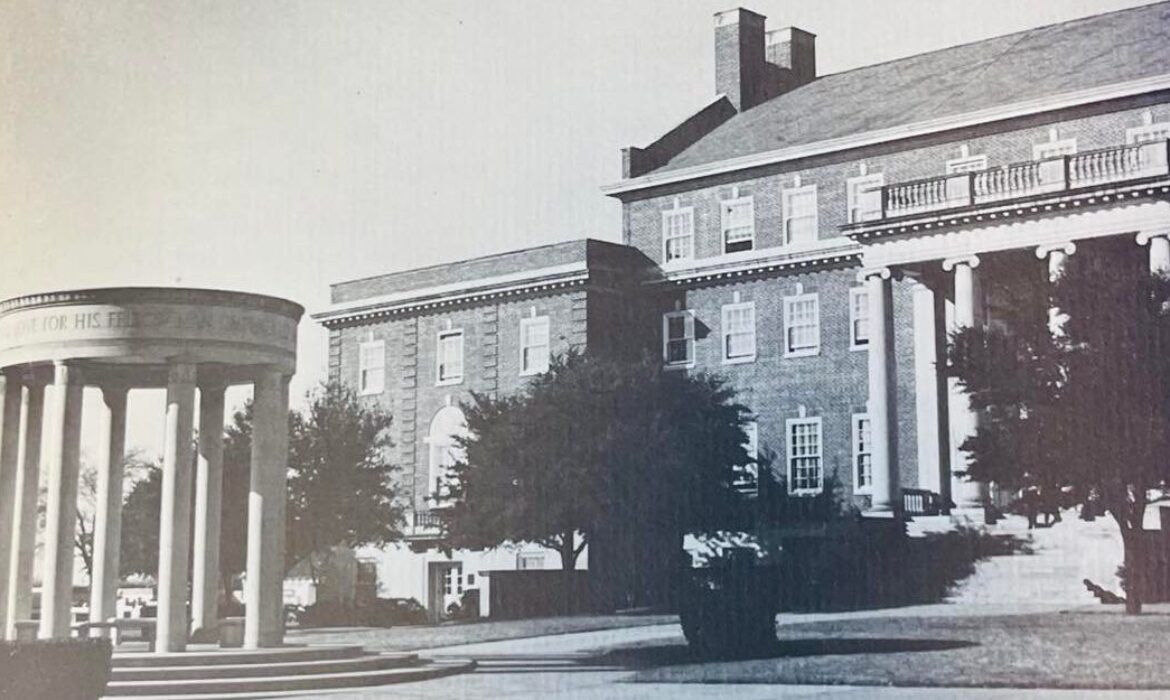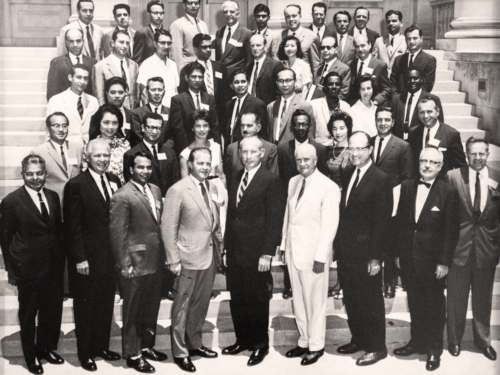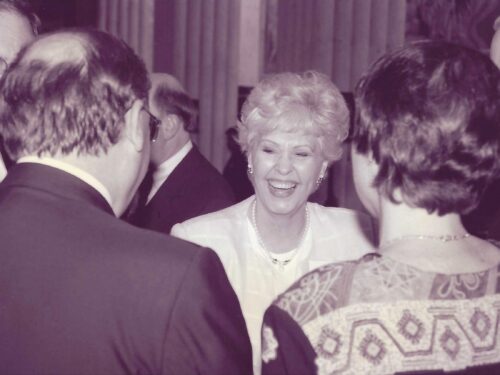
Author: Claude R. Miller
Source: American Bar Association Journal, Vol. 41, No. 9 (September 1955), p. 870
Published by: American Bar Association Journal | Shared with permission.
It is now nearly four years since the Southwestern Legal Center was dedicated on the campus of Southern Methodist University in Dallas. The growth of the first legal center in the United States has been indeed phenomenal since its conception seven years ago by Robert G. Storey, Dean of the Southern Methodist University Law School and a former President of the American Bar Association.
To Robert G. Storey goes the credit for the conception, construction and completion of the Southwestern Legal Center, the first completed Legal Center in the United States. It was his careful planning, previewed in the American Bar Association Journal, (34 A.B.A.J. 121, February, 1948) that was responsible for the accomplishments of the past seven years. Seven years ago the whole project was clear in his mind and was explicitly outlined in detail in that article. Since then, every goal has been attained and exceeded.
Those lawyers who did not have an opportunity to study the concept of the Law Center may not be familiar with its framework. That lack of familiarity accounts for some difficulty in distinguishing between the functions of “foundation”, “center”, and “law school”. An explanation is offered here.
The Southwestern Legal Foundation is a corporate entity formed by a representative group of businessmen and lawyers to conduct those activities which are beyond the ordinary scope of the law school. It has a contractual relationship with the University.
The Southern Methodist University School of Law is an educational institution for students who seek to learn to become lawyers.
The Southwestern Legal Center is the physical plant where the work of the foundation and the law school is carried on through the combined efforts of the faculty of the school and the staff of the foundation. As president of the foundation and dean of the school, Mr. Storey coordinates and integrates their activities. The plant has its situs on a five-acre tract of land that is a portion of the University campus which has been permanently dedicated to the use of the legal center. There are three buildings: “Florence Hall”, which houses classrooms, model courtrooms and a free legal aid clinic; “Lawyers Inn”, the home of seventy-five residents, and the clubrooms and dining hall of law students, foundation members and visiting lawyers; the “Legal Cen ter Building”, which, as the heart of the entire enterprise, houses the headquarters of the foundation staff, the offices of the school faculty, the oil and gas wing, the Law Institute of the Americas and five separate libraries.
One of the most far reaching undertakings of the Southwestern Legal Center has been its Law Institute of the Americas. Thirty-four students representing Argentina, Brazil, Bolivia, Chile, Venezuela, Peru, Costa Rica, Nicaragua, Guatemala, Mexico, Canada and the United States attended this institute during its first and second years. The purpose of this unusual educational activity is to promote good will and improve relations among the peoples of the Americas through the study of com parative laws, institutes and govern ments of the American republics, and to train lawyers in handling legal matters pertaining to the na tions of the Western Hemisphere.
In retrospect, Mr. Storey says,
“We are gratified and somewhat amazed that so many of our long range ob jectives were carried to their present status in such a short time.
A program that well could have required twenty years has been compressed in to seven. But this is only the begin ning. Now that the business leaders and lawyers see what can be accomplished, they are enthusiastic over the opportunity to help the South western Legal Center make its full contribution to this geographic area, to the nation and to our friends in other nations over the world.
We have seen a tremendous upsurge in interest in continuing legal education throughout the Americas. Other universities are establishing law cen ters. Bar associations are holding in stitutes, clinics and short courses of study in a way literally undreamed of ten years ago.
We are proud of the part the Southwestern Legal Center has had in this movement and hope that in the coming years we can con tinue to contribute leadership and achievement for the benefit of all mankind.”


